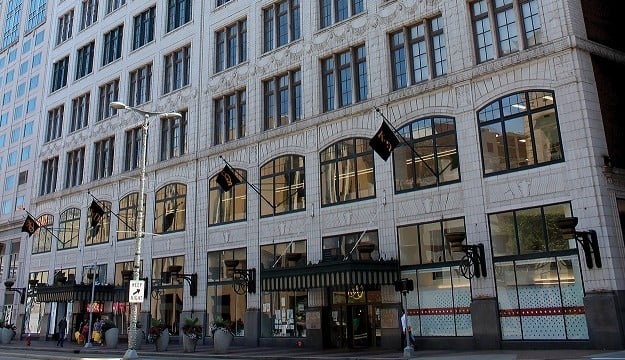"Output is increasing and firms are hiring to keep up with demand," says the agency's chief economist, Richard Kraglic. "Businesses are quite confident in this economic environment."
In November, total nonfarm payroll employment (seasonally adjusted) advanced by 6,200, with the Greater Seattle area accounting for roughly 45% of the growth. The biggest gainers were trade, transportation and utilities (+2,100), professional and business services (+1,300), and education and health services (+900).
Factories continued to hire again last month as manufacturing employment increased by 700. "Once again, the gains were concentrated in, but not limited to aerospace products and parts manufacturing, while nondurable producers continued to trim their payrolls," states the report.
Construction employment advanced by just 400 in November after averaging more than 1,000 net new jobs each month over the last 12. The slowing was evident in sectors related to both residential and nonresidential construction, according to the report. Residential building permits, adjusted for typical seasonal variations, have been slowing for the last couple of months.
"Is this the long-awaited slowdown in the housing market?" asks Kraglic rhetorically. "I think we need a few more months of data to be able to make that call."
The Seattle area continued to see solid growth in payroll employment in November, adding 2,800 jobs on a seasonally adjusted basis. "Seattle's employment base is still roughly 25,000 shy of the December 2000 peak," Kraglic says. "However, that gap is steadily narrowing."
The rise in statewide construction employment was due solely to the Seattle area, which added 1,000 jobs while the rest of the state lost construction jobs. November's gains were evident in subsectors typically associated with both residential and nonresidential construction activity.
With the exception of government and leisure and hospitality, employment in most other industries was flat. Government employment was down 700, with job losses in federal and local (other than education) government services. Leisure and hospitality employment was off 400 with nearly all of that concentrated in food services and drinking places. Kraglic says its too early to tell if the if the drop-off is related to the recent ban on indoor smoking.
Continue Reading for Free
Register and gain access to:
- Breaking commercial real estate news and analysis, on-site and via our newsletters and custom alerts
- Educational webcasts, white papers, and ebooks from industry thought leaders
- Critical coverage of the property casualty insurance and financial advisory markets on our other ALM sites, PropertyCasualty360 and ThinkAdvisor
Already have an account? Sign In Now
© 2024 ALM Global, LLC, All Rights Reserved. Request academic re-use from www.copyright.com. All other uses, submit a request to [email protected]. For more information visit Asset & Logo Licensing.








